Figures & data
Figure 1. Collection sites for the Cantharellaceae from the forest of the northwestern Himalayas, India.
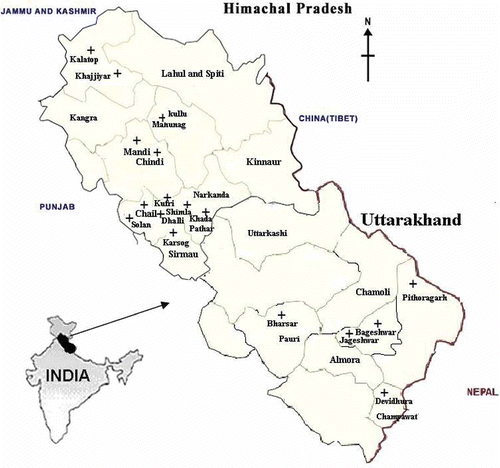
Table 1. Data of Cantharellus species examined from the northwestern Himalayas of India.
Figure 2. Phylogeny of Cantharellus generated from maximum likelihood of LSU sequences, rooted with Craterellus species. Parsimony bootstrap support (BS) and Bayesian posterior probability (PP) values >50% are given at the internodes (BS/PP). The bold species represent the Indian collections.
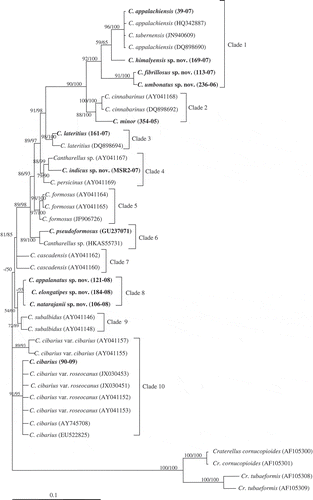
Figure 3. Phylogeny of Cantharellus generated from ITS sequences, rooted with Craterellus species. Bootstrap values are given at the internodes. The bold species represent the Indian collections.
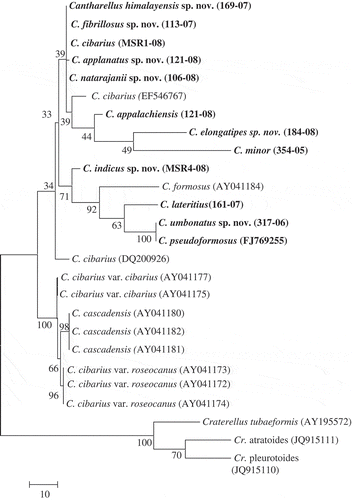
Figure 4. Basidiocarps of A. C. appalachiensis; B. C. applanatus; C. C. cibarius; D. C. elongatipes; E. C. fibrillosus; F. C. himalayensis; G. C. indicus; H. C lateritius; I. C. minor; J. C. natarajanii and K. C. umbonatus. (All the photographs are the holotype and the bar represents 2 cm.)
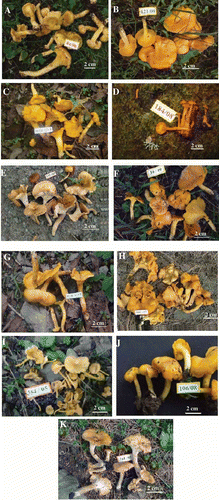
Figure 5. Basidiospores and basidia of A & B, C. appalachiensis; C & D, C. applanatus; E & F, C. elongatipes; G & H, C. fibrillosus; I & J, C. himalayensis; K & L, C. indicus; M & N, C. lateritius; O & P, C. natarajanii and Q & R, C. umbonatus. (All the elements are drawn from the holotype and the bar represents 10 µm.)
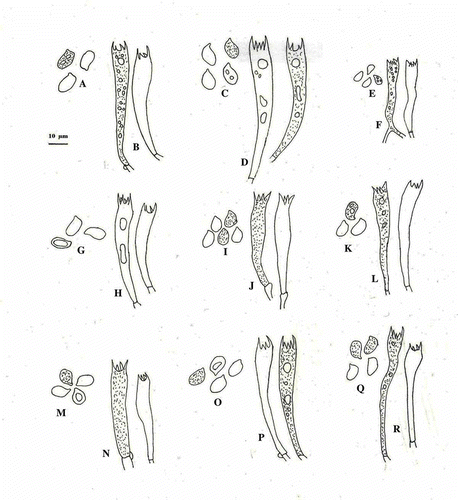
Figure 6. Pileipellis of, A. C. applanatus; B. C. elongatipes; C. C. fibrillosus; D. C. himalayensis; E. C. indicus; F. C. lateritius; G. C. natarajanii and H. C. umbonatus.
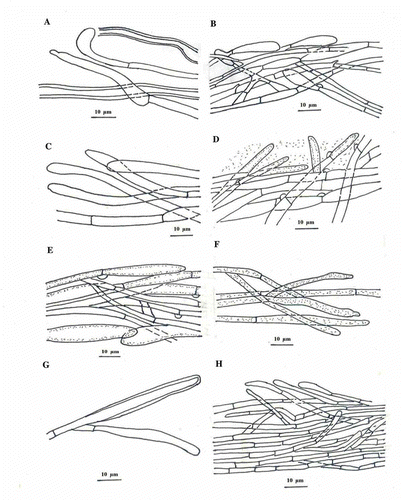
Table 2. Comparison of morphological characters of Cantharellus species found in the northwestern Himalayas region of India.